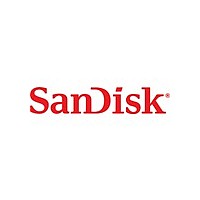SDCFAA-008G SanDisk, SDCFAA-008G Datasheet - Page 17

SDCFAA-008G
Manufacturer Part Number
SDCFAA-008G
Description
Manufacturer
SanDisk
Type
CompactFlashr
Datasheet
1.SDCFAA-008G.pdf
(47 pages)
Specifications of SDCFAA-008G
Density
8GByte
Operating Temperature (min)
0C
Operating Temperature (max)
70C
Package Type
Not Required
Mounting
Socket
Pin Count
50
Operating Temperature Classification
Commercial
Programmable
Yes
Lead Free Status / Rohs Status
Supplier Unconfirmed
SanDisk CompactFlash Card OEM Product Manual
02/09, Rev. 1.0 ii © 2007 - 2009 SanDisk Corporation. SanDisk Confidential, subject to all applicable non-disclosure agreements.
-INPACK
(PC Card I/O Mode except
Ultra DMA Protocol
Active)
Input Acknowledge
-DMARQ
(PC Card Memory Mode -
Ultra DMA Protocol
Active)
-DMARQ
(PC Card I/O Mode - Ultra
DMA Protocol Active)
DMARQ
(True IDE Mode)
-IORD
(PC Card Memory Mode
except Ultra DMA Protocol
Active)
-IORD
(PC Card I/O Mode except
Ultra DMA Protocol
Active)
-IORD
(True IDE Mode – Except
Ultra DMA Protocol
Active)
Signal Name
I
Dir.
34
Pin
17
The Input Acknowledge signal is asserted
by the CompactFlash Storage Card or
CF+ Card when the card is selected and
responding to an I/O read cycle at the
address that is on the address bus. This
signal is used by the host to control the
enable of any input data buffers between
the CompactFlash Storage Card or CF+
Card and the CPU.
Hosts that support a single socket per
interface logic, such as for Advanced
Timing Modes and Ultra DMA operation
may ignore the –INPACK signal from the
device and manage their input buffers
based solely on Card Enable signals.
This signal is a DMA Request that is used
for DMA data transfers between host and
device. It shall be asserted by the device
when it is ready to transfer data to or from
the host. For Multiword DMA transfers, the
direction of data transfer is controlled by
-IORD and -IOWR. This signal is used in a
handshake manner with (-) DMACK, i.e.,
the device shall wait until the host asserts
(-) DMACK before negating (-) DMARQ,
and re-asserting (-) DMARQ if there is
more data to transfer.
In PCMCIA I/O Mode, the -DMARQ shall
be ignored by the host while the host is
performing an I/O Read cycle to the
device. The host shall not initiate an I/O
Read cycle while -DMARQ is asserted by
the device.
In True IDE Mode, DMARQ shall not be
driven when the device is not selected in
the Drive-Head register.
While a DMA operation is in progress,
-CS0 (-CE1) and -CS1 (-CE2) shall be
held negated and the width of the
transfers shall be 16 bits.
If there is no hardware support for True
IDE DMA mode in the host, this output
signal is not used and should not be
connected at the host. In this case, the
BIOS must report that DMA mode is not
supported by the host so that device
drivers will not attempt DMA mode
operation.
A host that does not support DMA mode
and implements both PC Card and True
IDE modes of operation need not alter the
PC Card mode connections while in True
IDE mode as long as this does not prevent
proper operation in any mode.
This signal is not used in this mode.
This is an I/O Read strobe generated by
the host. This signal gates I/O data onto
the bus from the CompactFlash Storage
Card or CF+ Card when the card is
configured to use the I/O interface.
In True IDE Mode, while Ultra DMA mode
is not active, this signal has the same
function as in PC Card I/O Mode.
Description
Interface Description











